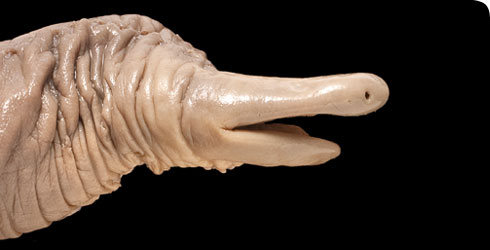Atretochoana eiselti
Atretochoana eiselti is a large, presumably aquatic, caecilian amphibian with a broad, flat head and a fleshy dorsal fin on the body.
It is one of the most enigmatic amphibians and the largest lungless tetrapod, more than twice the size of any other, and its skull is very different from that of other caecilians.
Until 2011, no living populations of A. eiselti had been found and only 2 preserved specimens were known.
Species detail
-

Taxonomy
Atretochoana eiselti can be readily distinguished from all other caecilians by its sealed internal nostrils and massive mouth. Learn about the taxonomy of the species and its closest relatives.
-

Distribution and conservation
Atretochoana eiselti was presumed to be from Brazil and has recently been discovered there. Find out more.
-

Biology
Information about Atretochoana eiselti was deduced from studying the morphology of the known specimens. Learn how this lungless amphibian is thought to breathe and what we can deduce about its likely living environment and feeding behaviour.
-

References
Get reference information for Atretochoana eiselti.
Images
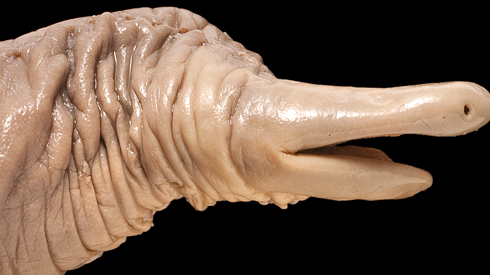
The strange-looking amphibian Atretochoana eiselti is the only known lungless caecilian. This image shows the side of its broad, flat head.
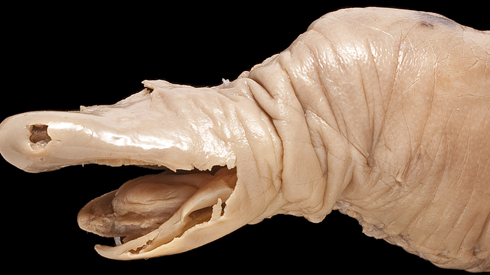
Lateral view of the head of Atretochoana eiselti
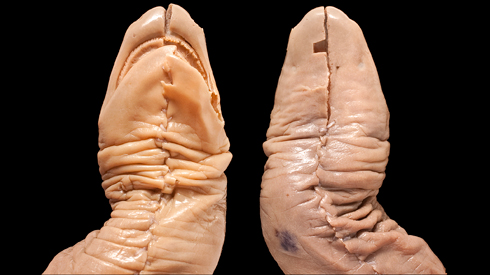
Ventral (left) and dorsal (right) views of the head of Atretochoana eiselti
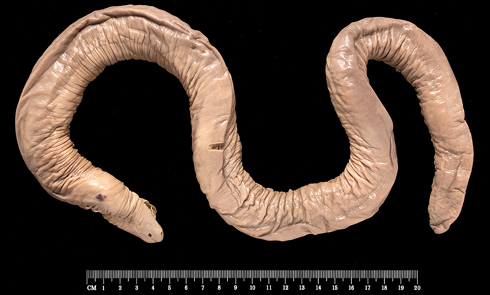
Dorsal view of an Atretochoana eiselti specimen
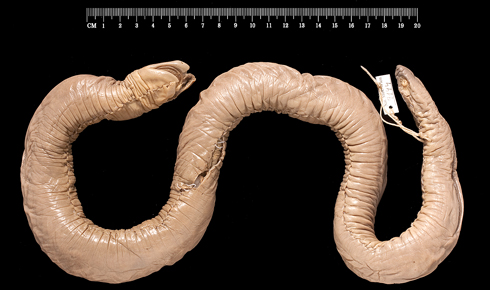
Ventral view of an Atretochoana eiselti specimen

Lateral (left, right), ventral (centre left) and dorsal (centre right) view of the tail of Atretochoana eiselti

CT scan of the skull of Atretochoana eiselti in dorsal view (image: Mark Wilkinson and Emma Sherratt, Natural History Museum).
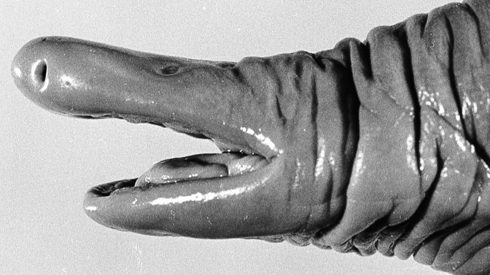
Head of Atretochoana eiselti
© RA Nussbaum, University of MichiganAbout the author
Toolbox
Glossary
Caecilian
An amphibian belonging to the order Gymnophiona. As caecilians lack limbs, species superficially resemble worms or snakes.
Tetrapod
A vertebrate belonging to the superclass Tetrapoda, usually with 4 legs or leg-like appendages although some limbless animals are tetrapods by decent. Amphibians, birds, mammals and reptiles are all tetrapods.
